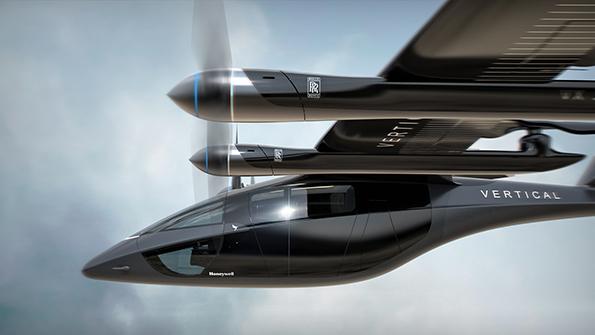Opinion: Why Electrification Will Reshape Engine MRO

With the aviation community looking forward to a post-pandemic recovery, it is generally accepted that industry forecasts need to be adjusted to account for its long-term effects.
Another key feature of the future planning matrix will be the critical role aviation plays in mitigating the effects of climate change, something that will be brought into sharp focus at the 2021 United Nations Climate Change Conference in Glasgow, Scotland. This is predicted to have a major impact on the entire aerospace sector, including MRO.
For Rolls-Royce, mitigating climate change has been a major preoccupation for many years through its work on making aircraft engines more efficient and its resolute commitment to new technologies and digital transformation in its working practices. The results of this approach can be seen in multiple new technologies, including those applied to Rolls-Royce’s UltraFan engine, which will be 25% more fuel-efficient than the first generation of Trent engines.
More recently Rolls-Royce has made specific commitments to achieve net-zero emissions by 2050, affecting not only engine manufacturing but how aircraft will be powered and maintained in the future.
Rolls predicts that the MRO sector will adapt in parallel to meet the evolving needs of the world’s aircraft fleet, estimated to reach 39,000 by 2030. While it will continue to service conventional aircraft and gas turbine engines, the impact of electrification, especially in fast-emerging sectors such as advanced air mobility, will become an increasing priority. How service is delivered and the opportunities that digitalization creates will shape all aspects of the industry.
The increasing electrification of flight will initially be seen on small propeller aircraft for commuter service with up to 19 seats and electric vertical-takeoff-and-landing (eVTOL) aircraft. These all require a different approach to maintenance, with service and inspections being carried out on-site at airfields, regional airports and an increasing network of vertiports in urban areas.
Changing working practices demand new and transferrable skills. Engineers need to integrate their conventional electrical and mechanical engineering training with software and systems that are constantly evolving. A systems-focused mindset and digital skills are critical. Continual training to keep up with frequent developments in electrification will be essential.
Battery technology and the power to charge batteries is one immediate example where an integrated approach needs to be applied, including providing charging points and infrastructure to manage how energy is accessed from the power grid and stored. Rolls-Royce says that innovations with fuel cells, microgrids and its work on small nuclear reactors offer solutions to these challenges.
The laws of physics suggest that the full electric propulsion of large commercial aircraft is unlikely for the foreseeable future. However, we will see greater use of electric aircraft and an increasing degree of hybridization. This, in turn, will create new opportunities for the MRO sector.
One key factor governing the speed and practical application of change will be the investment required in infrastructure. The move toward electric propulsion as a core enabler of decarbonizing strategies appears high on the agenda of many established aviation hubs, especially in the Persian Gulf region.
Several Gulf states—Dubai, Qatar and the United Arab Emirates—have shown a keen interest in being the first to introduce electrically powered air taxis. They are also likely to have the financial and regulatory capacity to gain first-mover advantage, offering opportunity for airframers and service providers alike.
While the future shape of the MRO industry will be affected by the same dynamics that drive the aerospace and aviation sectors, the need to accelerate a positive environmental dividend will be paramount for all stakeholders. The short-term focus on making engines more fuel-efficient, switching to sustainable aviation fuels and adopting all-electric and hybrid systems will be key waypoints on the road map for sustainable aviation.
Stefan Breunig is head of strategy for Rolls-Royce Electrical. Dan Hudson is head of service for Rolls-Royce Electrical.
The views expressed are not necessarily shared by Aviation Week.
